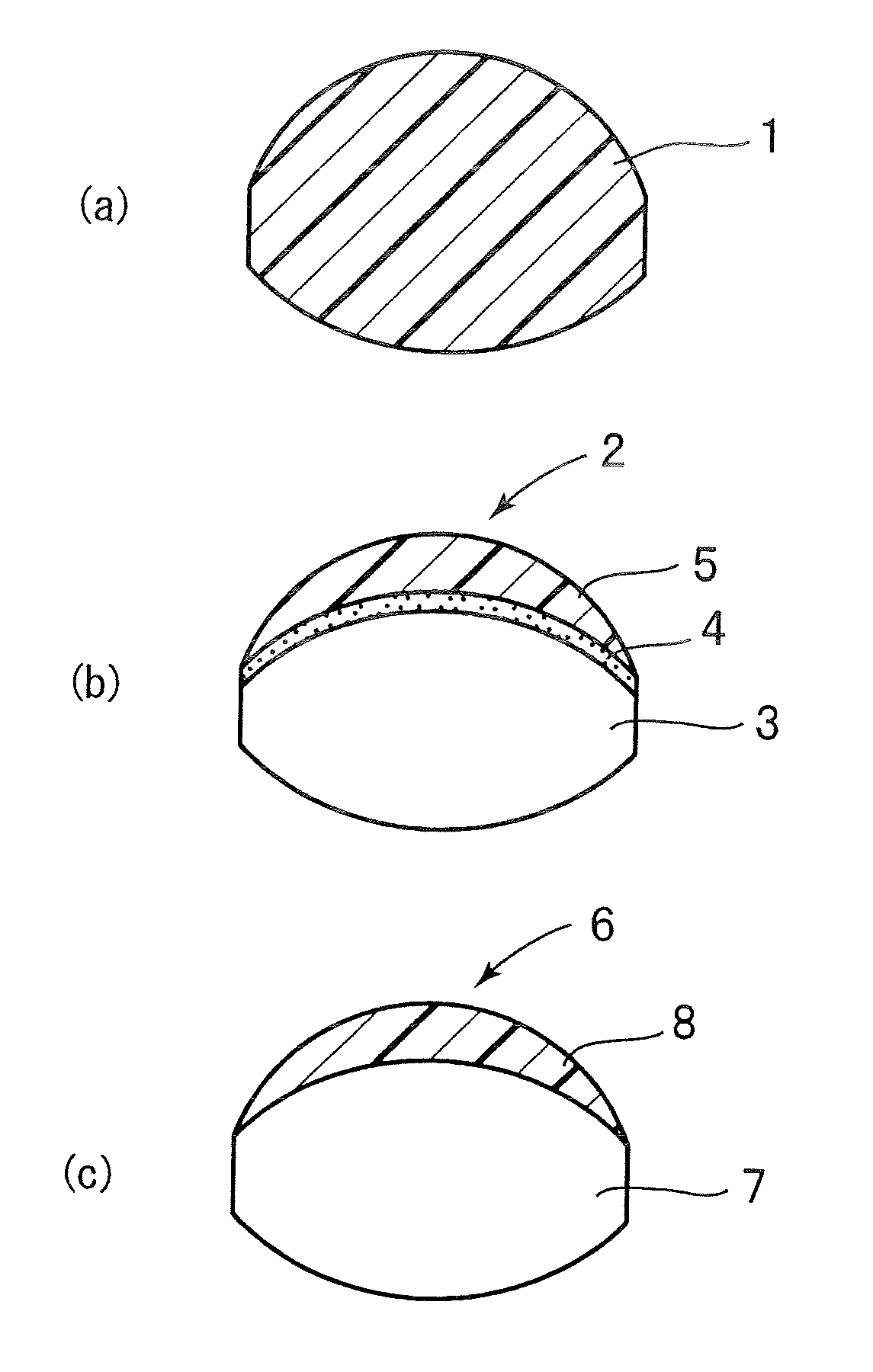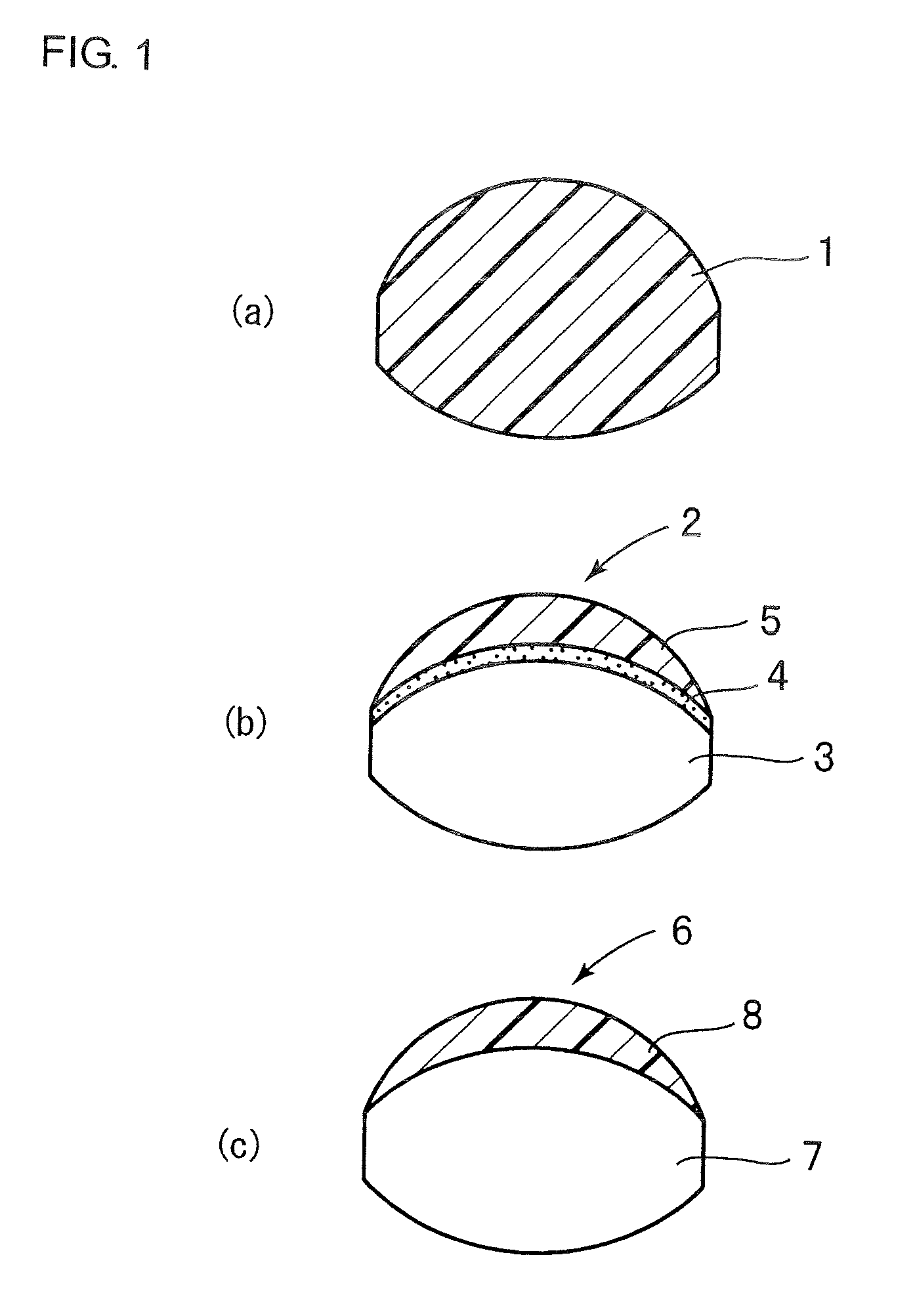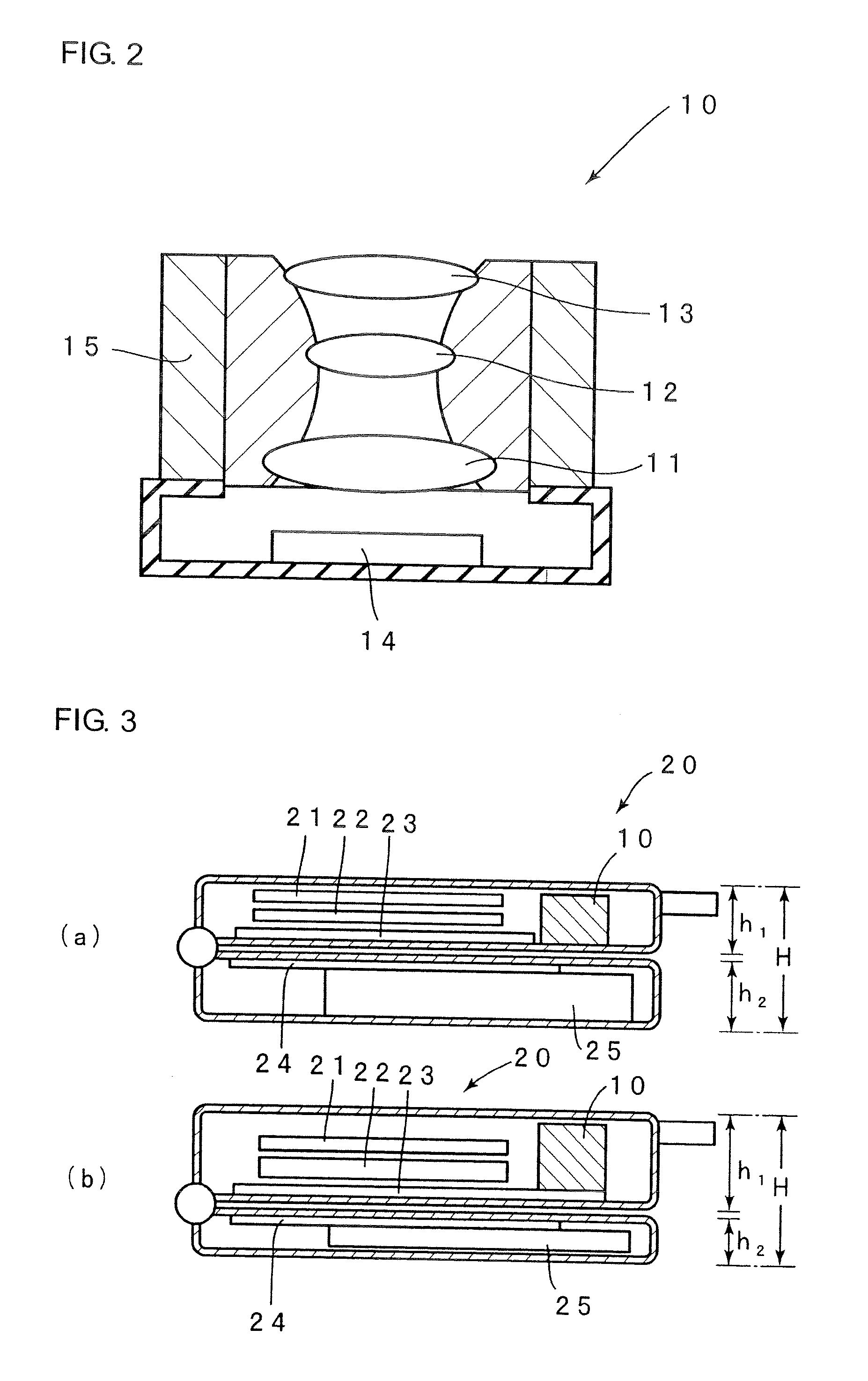Organic-inorganic composite forming material, organic-inorganic composite and optical element using the same
a technology of organic inorganic composites and organic inorganic composites, which is applied in the field of organic inorganic composite forming materials, organic inorganic composites and optical elements using the same, can solve the problems of difficult polishing of glass-made aspherical lenses, shortened service life of molds, and unsuitable for low-cost mass production, and achieves high refractive index
- Summary
- Abstract
- Description
- Claims
- Application Information
AI Technical Summary
Benefits of technology
Problems solved by technology
Method used
Image
Examples
example 1
[0063](1) 0.028 ml of aniline, 0.049 ml of pentaerythritol triacrylate, 0.096 ml of benzyl methacrylate and 0.016 g of a photoinitiator (product name: IRGACURE 184) were sequentially added with stirring to 0.5 ml of the above-prepared liquid dispersion of Nb2O5 nanoparticles which was subsequently heated at 90° C. to evaporate ethanol. 1 ml of acetone was added and dissolved in the liquid rendered viscous after removal of ethanol to obtain a liquid (A).
[0064](2) 0.582 g of a bifunctional fluorene-based acrylate (product of Osaka Gas Chemical Co., Ltd., product name “OGSOL EA-0200”) was dissolved in 1 ml acetone to obtain a liquid (B).
[0065](3) The liquid (B) was added to the liquid (A). The mixture was heated at 90° C. to evaporate acetone and then allowed to stand at 110° C. for 30 minutes to thereby fully remove the remaining acetone, so that an organic-inorganic composite forming material was obtained.
[0066]The content of each component in the organic-inorganic composite forming ...
example 2
[0074]An organic-inorganic composite forming material was prepared in accordance with the procedure of Example 1 with the following modifications: 0.5 ml of the liquid dispersion of Nb2O5 nanoparticles, 0.028 ml of aniline, 0.01 ml of pentaerythritol triacrylate, 0.148 g of hydroxyethyltribromo phenol acrylate (manufactured by Dai-ichi Kogyo Seiyaku Co., Ltd., product name: “New Frontier BR-31”) and 0.015 g of the photoinitiator were used.
[0075]The organic-inorganic composite forming material was then cured by ultraviolet irradiation into an organic-inorganic composite. Measurement thereof revealed a refractive index of 1.63 and an Abbe number of 26.
[0076]Also following the procedure of Example 1, a 120 μm thick plate-like organic-inorganic composite was prepared and then subjected to an abrupt temperature change to examine the occurrence of cracks. No appreciable cracks were observed.
example 3
[0077]In this Example, a bifunctional acrylate is used for the acrylic monomer, instead of using a polyfunctional acrylate and a monofunctional acrylate in combination.
[0078]An organic-inorganic composite forming material was prepared in accordance with the procedure of Example 1 with the following modifications: 0.5 ml of the liquid dispersion of Nb2O5 nanoparticles, 0.028 ml of aniline, 0.12 ml of dipropylene glycol diacrylate and 0.015 g of the photoinitiator were used.
[0079]An organic-inorganic composite was prepared in the same manner as above and then measured. The measurement results revealed a refractive index of 1.62 and an Abbe number of 26.
[0080]Also in the same manner as above, it was subjected to an abrupt temperature change to examine the occurrence of cracks. No appreciable cracks were observed.
PUM
| Property | Measurement | Unit |
|---|---|---|
| wavelengths | aaaaa | aaaaa |
| wavelength range | aaaaa | aaaaa |
| molar ratio | aaaaa | aaaaa |
Abstract
Description
Claims
Application Information
 Login to View More
Login to View More - R&D
- Intellectual Property
- Life Sciences
- Materials
- Tech Scout
- Unparalleled Data Quality
- Higher Quality Content
- 60% Fewer Hallucinations
Browse by: Latest US Patents, China's latest patents, Technical Efficacy Thesaurus, Application Domain, Technology Topic, Popular Technical Reports.
© 2025 PatSnap. All rights reserved.Legal|Privacy policy|Modern Slavery Act Transparency Statement|Sitemap|About US| Contact US: help@patsnap.com



